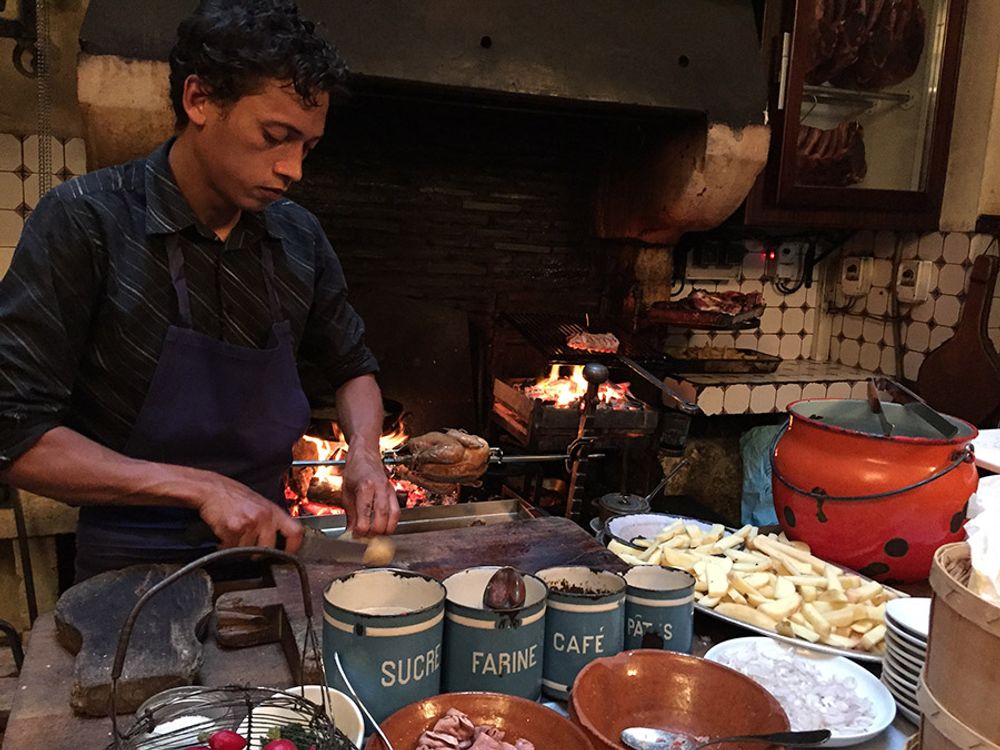It is only just over three months since the UK’s decision to leave the European Union. But some major wine suppliers have already decided to put up prices as the fall in sterling now makes buying wine so much more expensive. But, asks Alistair Morrell, have they jumped the gun too early?

Alistair Morrell: keeping his eye on the right price for wine in the UK on-trade
According to what I hear deep in the wine cellars of power is that many of our major wine suppliers are looking to put up wine prices, if they have not done so already. But I understand the biggest company, Bibendum, the largest wine focused supplier, is holding back possibly until the New Year.
What’s surprising is the rapidity and the readiness with which the trade is increasing prices. The theory suggests that an industry with a few big competitors and many smaller ones, combined with a consolidating and maturing market that the bigger suppliers would hold out waiting to snap up market share at the expense of the smaller suppliers and period profit.
Bearing in mind the proximity of the key Christmas trading months, then it would not be unreasonable to see price rises in the New Year. However there are now three major, and mostly on-trade suppliers, proposing to raise prices within the next month.
What is the scale of the increases? It is reported that the increases being proposed by wholesalers are going to be between 0% and 7%.When you pick over these and look at the scale of cost increases then they seem reasonable.
The currency decline is 14.7% for the US$ (19.9.15 vs 8.9.16 – XE.com), at its lowest the decline was 12.9% (19.9.15 vs 6.7.16 – Xe.com) and 24.6% or 21% for the euro depending on the point at which you take the currency ratio.
These are dramatic figures but translate into much lower (around 8% of total selling price) numbers when the other costs are taken into consideration.
What should buyers do?
So what should be the response of buyers in the on-trade and hospitality sectors? Can buyers of wine or drinks be putting up prices at this time year?
The first question to ask is how important is wine to your business on a sales and profit basis and then how important is it to your customers. It may be that the two are the same, but they could be different.
For example, an outlet led by volume with a significant share of wine sales, might find that a 5-7% increase in wines prices is probably going to see its customers drink less wine and switch to other drinks. Cider has been growing like crazy and is ready to take its share. Similarly the choice and quality of craft beers can’t be ignored. Even if this might not be the natural switch for a female millennial used to chucking down a sweeter style of rosé. Cider and fruit ciders though, is a real possibility.
And who can ignore the on-going gin phenomenon not to mention cocktails.
This is an area of debate that needs some serious consideration, particularly for a wine driven outlet. The sector has proven to be resilient over the very long term – and consumers are not going to stop drinking wine in a hurry. However, the changes that we have recently seen in the market may well continue at pace.
Sparkling wine, led by Prosecco, continues to grow like crazy, whilst Marlborough Sauvignon appears to be as popular as ever, which is good news for the on-trade considering it also has the average price in the UK market for a major regional style. And Malbec has now become a sector in its own right.
Alongside this is the growing interest from consumers to seek out provenance from any food or drink item they look to consume – they want to know where it comes from and at what price to my wallet.
In essence consumers are drinking less, but better quality and being persuaded to spend a more on it. Wine as a special occasion drink is becoming a norm.
Managing wine lists
How does this change the approach of the sommelier or owner/manager revamping a wine list? It is about knowledge, insight and value. Knowing what your customers want from wine specifically, understanding the broad trends in the wine market, applying them to your list and maximising the value.
That all sounds very glib and broad, but I will finish with a story from one of Bordeaux’s finest restaurants of its time, particularly in the 1990s, La Tupina.

World famous service at La Tupina shows price is not always the most important factor in the on-trade
It is a rustic restaurant in the heart of Bordeaux, where everything was (probably still is) cooked on open wood fires, and visited by the likes of Mitterand and Clinton. The waiter brought the wine list, which, one ‘in the know’ promptly ignored and then, you discreetly asked him for ‘La Liste dans la Poche’. As if by magic a list of private ‘cellar’ wines appeared from the top breast shirt pocket. These were not available unless requested.
Oh boy, how to make a customer feel special, exclusive and one above the other diners, in a place that was one up already – unbelievable. Not a great route for volume, I grant you, however a tactic that inspires one of those everlasting truths – word of mouth and experience are still the most powerful tools for the hospitality industry.
For those wrestling with wine price increases, right now we need to apply all of the creativity we can muster so that we can give our customers every ounce of that experience.









































